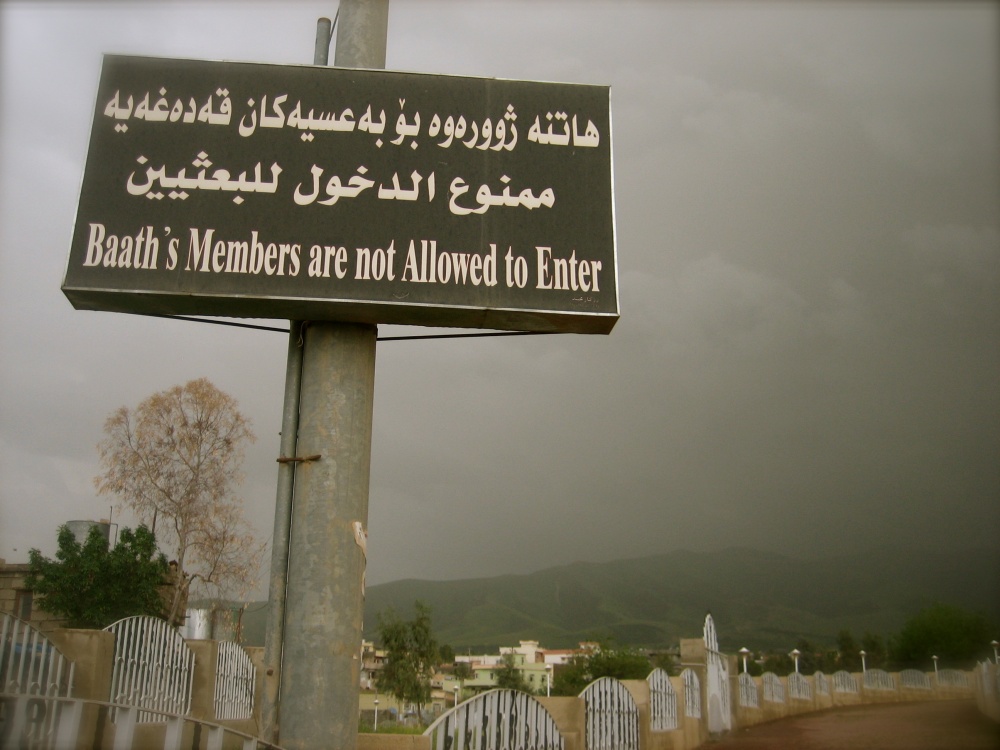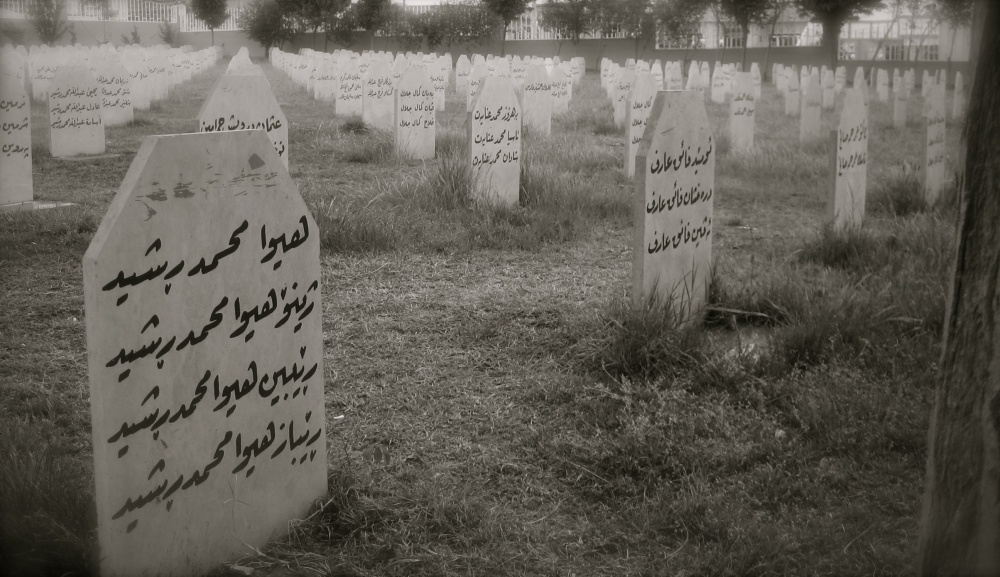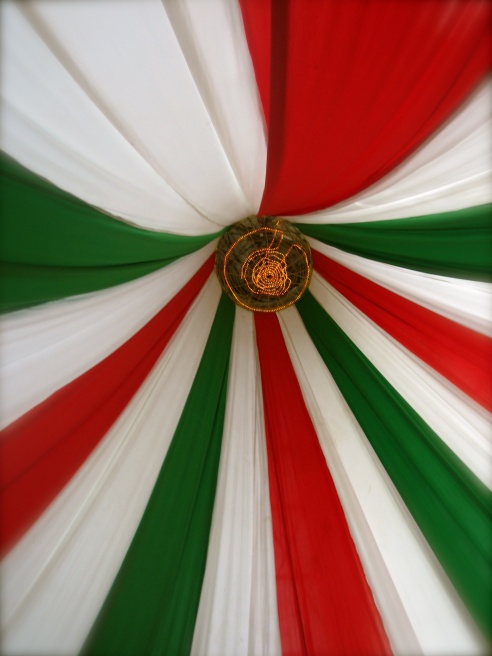There is a cemetery just a few meters from the border between Iraq and Iran. Like most cemeteries it features rows and rows of stone reminders of those who have passed. It also contains three mass graves and bears a warning - “No Ba’athists Allowed to Enter”. This cemetery is a representation of the defiance of the Iraqi Kurds to Saddam’s Ba’athist regime. A regime that terrorized and annihilated the town of Halabja on March 16, 1988 - an act that lives on in the memory of the citizens of Halabja and one that has entered collective memory as a symbol of the Iraqi repression of the Kurds. Along with the cemetery there exists a memorial museum, located just on the outskirts of town, built fifteen years after the attacks with foreign money. It is dedicated to the thousands that lost their lives and the thousands more who disappeared that day. These spaces are indeed the physical sites where the past is recaptured, the memory is shared, and the tradition is passed on. With these sites, like all memorials, choices were made -- what would be foregrounded and what would be forgotten.
Why have the people of Halabja chosen to memorialize these events in the way that they have? It could be as simple as the fact that most societies either memorialize their achievements or their failures. Memorials are a natural part of rebuilding the human psyche after war or terror. But in the case of the Kurds, and the people of Halabja in particular, the more complete explanation lies in the importance and necessity of a memory shared by all. This past legitimizes and reinforces the present social order - one that is actively pursuing and negotiating the need for Kurdish independence evidenced by the attempted genocide they have endured. These spaces of remembrance are more than just memorials of a tragic day - they announce a kind of hope that experience is to be shared. Through an alliance with the outside world -- a day like March 16, 1988 will never happen to the Kurds again.
Quite possibly the most iconic phrase associated with Holocaust memorials around the world is “Never Again”. Not only does the phrase imply that such an atrocity should never happen to the Jewish people of the world again -- it also implies a collective responsibility of all humanity to prevent that kind of atrocity from happening to any population. When the people of Halabja posted a sign at the entrance of their cemetery declaring, in English and in Kurdish, “Baath’s Members are not Allowed to Enter” they were effectively saying, “Never Again”.
It has been almost 25 years since the chemical attacks on Halabja and it is still very much a city in ruin. The world has moved on and these events exist in memory. Photographs are part of what is left to preserve the past. They serve as a broker for what is to be remembered and what can be forgotten.
If Halabja is the story of victims -- it has a sister -- the city of Ranya (also in Iraqi Kurdistan). In the very center of Ranya exists a memorial to her heroes and the myth of the undoing of Saddam begins here. I hope to be able to photograph Ranya so that the history and significance of these two cities can be shared as visual memory with their citizens and with the world.
Thank you for considering this project.













